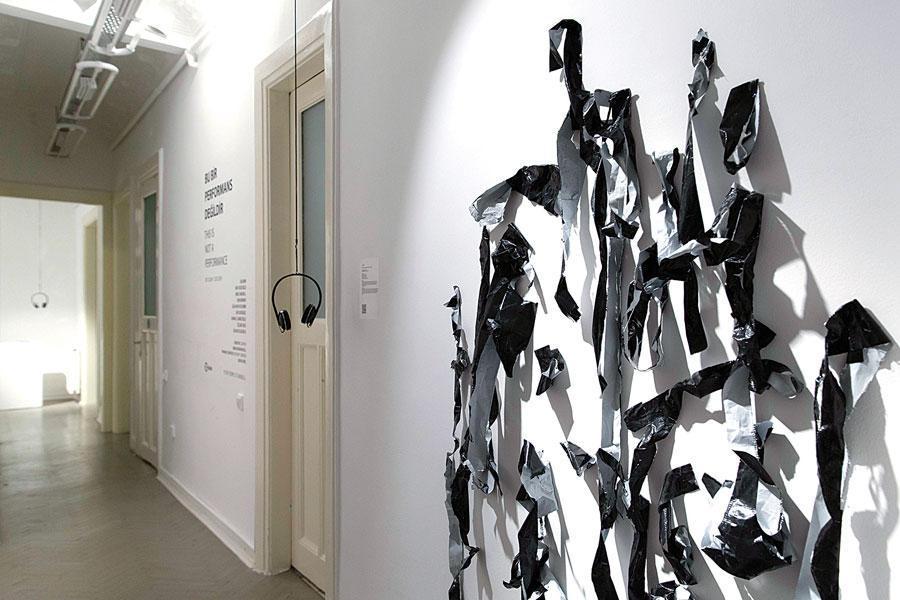
Performistanbul values not only the moment of a performance, but the remaining objects and memories of the performance, too. What is left behind is the real gem after a performance, according to Simge Burhanoğlu, the curator of the show titled “This Is Not a Performance,” held at Istanbul’s Daire Sanat.
The exhibition hosts different kinds of performance materials remaining from past performances. “This is an important attempt in terms of archiving performance art. We know many artists who get rid of their own artwork by throwing away performance materials. However, this is a part of archiving the work,” said Burhanoğlu.

“The works tell us about the processes of performances realized by Performistanbul artists since its foundation. It is possible to see every kind of material and different installation. In a way, this exhibition questions the possibility of exhibiting time and investigates reflections of the performance process on actual life while presenting the transformation of the process into an object,” she said.
On the one hand, we witness the impossibility of exhibiting performance art. What we call a performance is something that happens in the moment that life exists.
However, thanks to a revolutionary point of view of Burhanoğlu, this time the viewer sees a different approach. In terms of questioning the performance art, this is a new trend, according to Burhanoğlu. We see the remaining of the process and a valuable approach toward the performance art.
The exhibition seeks answers to these questions by showcasing the remaining solid objects from past performances accompanied with the voice records of the performance artists. Artists take the memory of the performances to the center, but also try to open a new and more revolutionary way of looking at their own performances. In a way, they discover a more liberating way to look at their performances.
Works vary with different materials. For example, Ekin Bernay’s “My Sandcastles” is a project that she made to question illness and health. Her way of looking at things is not from one angle, but many. That’s why she uses the memory of a relative’s illness process and transforms her feelings by making bandages for her body.
The sand she uses in the exhibition area reflects the impossibility of keeping feelings under control, or with the case of the sand, in your hand. Everything passes and everything eventually diminishes.
Batu Bozoğlu’s “15 Minutes” work is another material that has remained after his performance. “15 minutes” is significant, as Warhol once said “In the future, everyone will be world-famous for 15 minutes.” However, it seems like Bozoğlu’s sculpture, like an installation at the entrance of the Daire Sanat is something that came from the past and is going to the future. The clock that is made with different materials surrounding it made the work similar to a gadget that was used in the past. It once more reminds the viewer if the phrase has any reality to it.
The aim of the performance is to channel the boundless and endless stream of personal narrative of contemporary media. The performance is investigating the status where the contract is broken by the art piece that refuses the process of ending and entertaining.
“The aim of this exhibition is not to present a live performance or exhibit documentation, it is rather to create an understanding toward performance art by focusing on the process, the effects of it on the performers, audience and their lives. In this sense, Leman Darıcıoğlu’s work may fit the theme best. Her work embodies an old incident in Istanbul’s Beyoğlu district and uses remains and her journal pages in her work.
Burhanoğlu said the exhibition discovers how a live performance transforms time and place into an experience and an art piece. In another way, we question if the remains of a past performance hold an artistic value or if they are just random objects from past performances.
The exhibition will continue through Jan. 12, 2019.